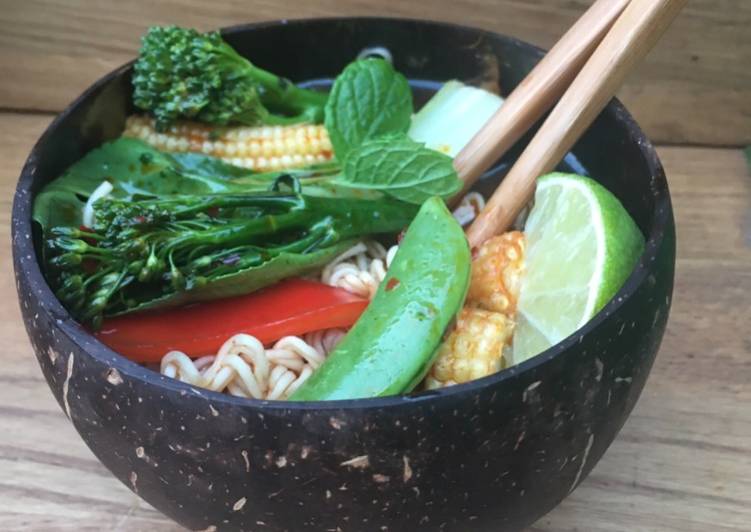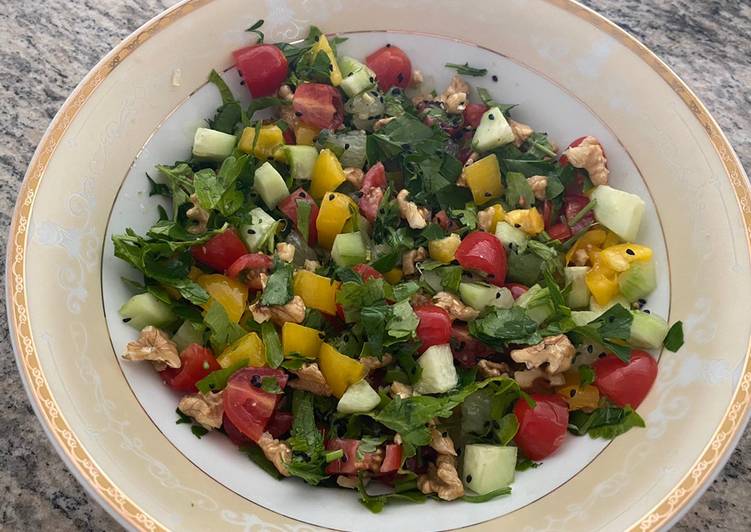
Hello everybody, I hope you are having an incredible day today. Today, we’re going to prepare a distinctive dish, noodles with vegetables and beancurd. One of my favorites. For mine, I’m gonna make it a bit unique. This is gonna smell and look delicious.
Filled with a rainbow of delicious vegetables, this vegetable stir fry mung bean noodle dish is vegan and gluten-free! There's egg noodles, seasoned egg noodles, flat rice noodles, mung bean noodle threads, instant ramen (my brother's contribution)—nearly. Thai calls this "sukiyaki" from a Japanese dish but the thai version is so different from the original so nothing look alike anymore.
Noodles with Vegetables and Beancurd is one of the most favored of recent trending foods on earth. It’s appreciated by millions daily. It is simple, it’s fast, it tastes delicious. Noodles with Vegetables and Beancurd is something which I’ve loved my entire life. They are fine and they look wonderful.
To get started with this recipe, we have to first prepare a few ingredients. You can have noodles with vegetables and beancurd using 14 ingredients and 4 steps. Here is how you can achieve that.
The ingredients needed to make Noodles with Vegetables and Beancurd:
- Get 2 rounds of dried noodles
- Take 1 cup dried beancurd skins
- Get 2 small carrots
- Take A few green Beans
- Prepare A few spears of broccoli
- Get A few baby corns
- Get Sugar Snap Peas
- Make ready A few Spring onions
- Get 1/2 teaspoon freshly grated ginger
- Make ready 1/2 teaspoon freshly grated garlic
- Get 1 tablespoon fermented chilli bean paste
- Make ready 1 splash oil
- Take A few mint leaves
- Take 1 wedge of lime
Finely slice vegetables - the more colourful the mix the better. Mung bean noodle sheets are brittle and too large to fit into most bowls. But don't break them up so they fit: just pour boiling water over them and, with a little time, they'll be soft and pliable. Shanghainese call this beancurd sheet rolls (or yuba wraps, or tofu skin rolls 腐皮卷), 'Vegetarian Goose', a traditional dish they often served as appetizer.
Steps to make Noodles with Vegetables and Beancurd:
- Soak the noodles and beancurd skins in hot water to hydrate. The time will depending on the type. but both should be soft but not soggy. Drain and set aside.
- Wash and prepare the veg and cut into bite sized pieces. Finely slice the greens of the onions to garnish
- Heat the oil and cook the beancurd skins until hye start to crisp and the edges. Remove from pan and set aside. Cook the garlic and ginger for a minute and add the veggies. This will not take long in the hot wok and don't overcook. Remove from pan and set aside. Add the noodles to hot wok and add the chilli bean paste. Stir until combined and return the veggies and beancurd to the pan.
- Eat dry or add a little stock to make soup. Serve with a wedge of lime and a sprig of mint.
Like bean thread or cellophane noodles, they have a particularly neutral flavour. Find them at any Asian food store and use them in soups They're made using vegetable starches, not flour, and the vegetables range from mung bean, cassava, potato, sweet potato and. Most vegetable dishes that call for fermented bean curd use this white bean curd, and it is almost always what you will get when ordering stir fried leafy green vegetables with fermented bean curd in restaurants today. Whole wheat linguine makes a great Asian-style noodle recipe. Toss with a quick alongside veggies for peanut noodles with Peanut sauce is a great addition to stir-fries, chicken or tofu, and vegetable dishes.
So that’s going to wrap this up for this exceptional food noodles with vegetables and beancurd recipe. Thanks so much for your time. I am confident that you can make this at home. There is gonna be more interesting food at home recipes coming up. Don’t forget to bookmark this page on your browser, and share it to your family, friends and colleague. Thank you for reading. Go on get cooking!


